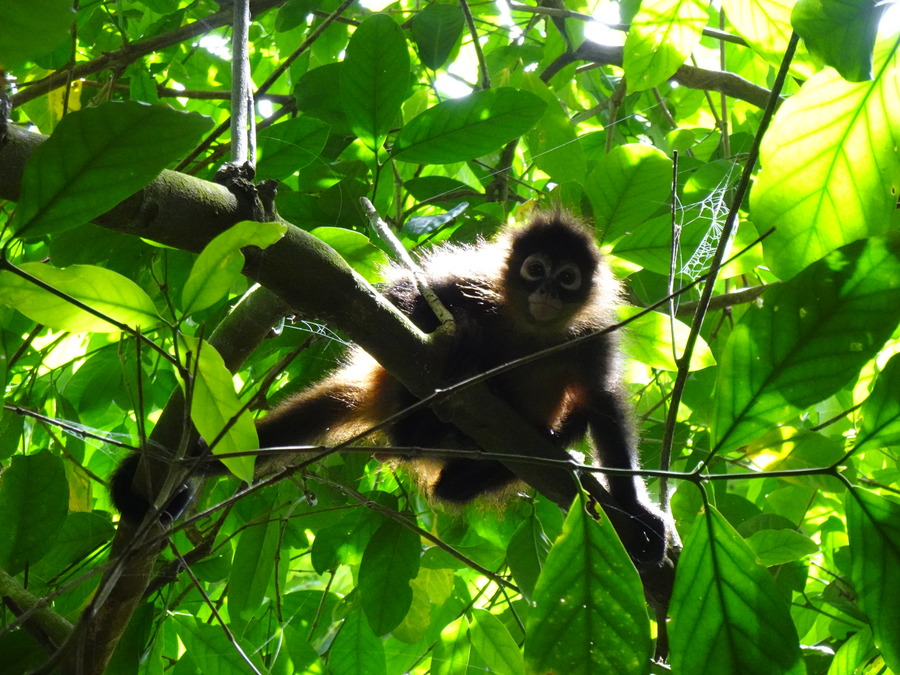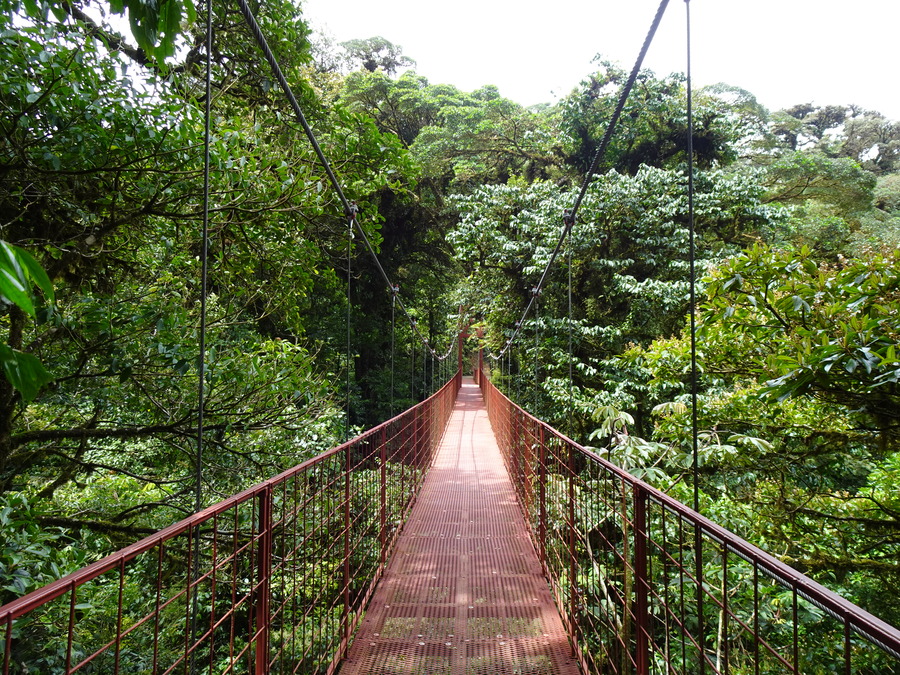Costa Rica is a country of contrasts. There are sweeping, sandy beaches, smoking volcanoes and mystical cloud forests. (And that’s before we get to the dense rainforests brimming with wildlife, the coastal mangroves, and the high-altitude páramo, or grassland, found on the ascent of Costa Rica’s highest peak, Cerro Chirripó.) Sandwiched between Nicaragua and Panama, this Central American country is an adventure-seeker’s paradise. We packed a fair bit into three weeks, but inevitably only scratched the surface. I’ll go into more detail on the various places we visited in subsequent posts, but thought I’d start with a (long-overdue) overview of our trip. ¡Vamos!
Our trip began in San José, after a flight plagued by delays and a few hours’ sleep in a hotel in Alajuela (conveniently located a few kilometres from the airport). We caught the first bus of the day to San Isidro de El General (also referred to as Pérez Zeledón), where we transferred to a local bus to San Gerardo de Rivas – the gateway to Chirripó National Park. Our plan? Summit Cerro Chirripó, Costa Rica’s highest peak at 3,821m.
I also spent the last birthday of my twenties exploring the beautiful Cloudbridge Nature Reserve. We were there in early July, and had the place almost to ourselves – which was an unexpected bonus.
Our next stop was the Osa Peninsula – and the town of Puerto Jiménez. As we travelled by public bus, it took us pretty much the whole day to get there from San Gerardo de Rivas. On the upside, we did enjoy a filling casado (this is typical Costa Rican fare, consisting of rice, beans, meat and a salad of some sort) and a bag of rambutan whilst waiting for one of our bus connections.
We spent almost a week in and around Puerto Jiménez, using it as a jumping-off point for Corcovado National Park (Parque Nacional Corcovado). We had booked a multi-day hike from Carate to Sirena Ranger Station with Osa Wild, and I would strongly recommend hiking into Corcovado National Park (as opposed to arriving by boat) if you are able to. It felt like a splurge at around the £550pp mark*, but it was our (belated) honeymoon and for me it was 100% worth it. We saw far more wildlife on the hike in/out (including an adorable Baird’s tapir and all four species of monkey found in Costa Rica) than we did on the shorter walks we did around the ranger station.

Whilst in Puerto Jiménez, we:
- visited La Perica Sloth Garden. The Valverde family’s knowledge of the local wildlife and commitment to creating a safe haven for two- and three-toed sloths is incredible, and although we saw sloths in a few places on our trip this was by far the best place for taking photos of them;
- cycled to Playa Platanares, a gorgeous stretch of sandy beach a few kilometres outside the town; and
- kayaked in the mangroves around Puerto Jiménez (and enjoyed some seasonal fruit whilst watching the sunset).
Our final week was split between exploring Arenal Volcano National Park (Parque Nacional Volcán Arenal) and the cloud forests around Santa Elena (the most famous of which being Monteverde). We took up a friend’s recommendation of staying at Arenal Observatory Lodge, and were very glad we had done so. It’s a bit out on a limb (especially if, like us, you’re not hiring a car) but it more than makes up for that with its peaceful atmosphere and abundance of wildlife. I had a lot of love for the frog pond.
Most of our time was spent wildlife-watching on the trails around Arenal Observatory Lodge and (for Laurence’s birthday) the nearby Mirador El Silencio, but we made sure to set an evening aside for the hot springs. There are oodles of hot springs to choose from in this area, so you’re sure to find one that suits your budget and preferences. (Ecotermales ticked the boxes for us: no squealing children, plenty of pools at different temperatures, the option to add a meal, and not too pricey overall.)
We then took the jeep-boat-jeep service to Santa Elena, home to Costa Rica’s cloud forests: there’s the famous Monteverde Cloud Forest Reserve (which is lovely if you’re into plants and trees but which I wouldn’t recommend if wildlife is high on your agenda, but more on that another time) and the much more peaceful Santa Elena Cloud Forest Reserve.

There’s also Bajo del Tigre (part of the Children’s Eternal Rainforest) and the Curi-Cancha Reserve (which was the highlight of our time in Santa Elena). Over four days, we saw all sorts of hummingbirds, the famous resplendent quetzal, the three-wattled bell bird, and even a small family of owls. I was not prepared for how utterly adorable they were.